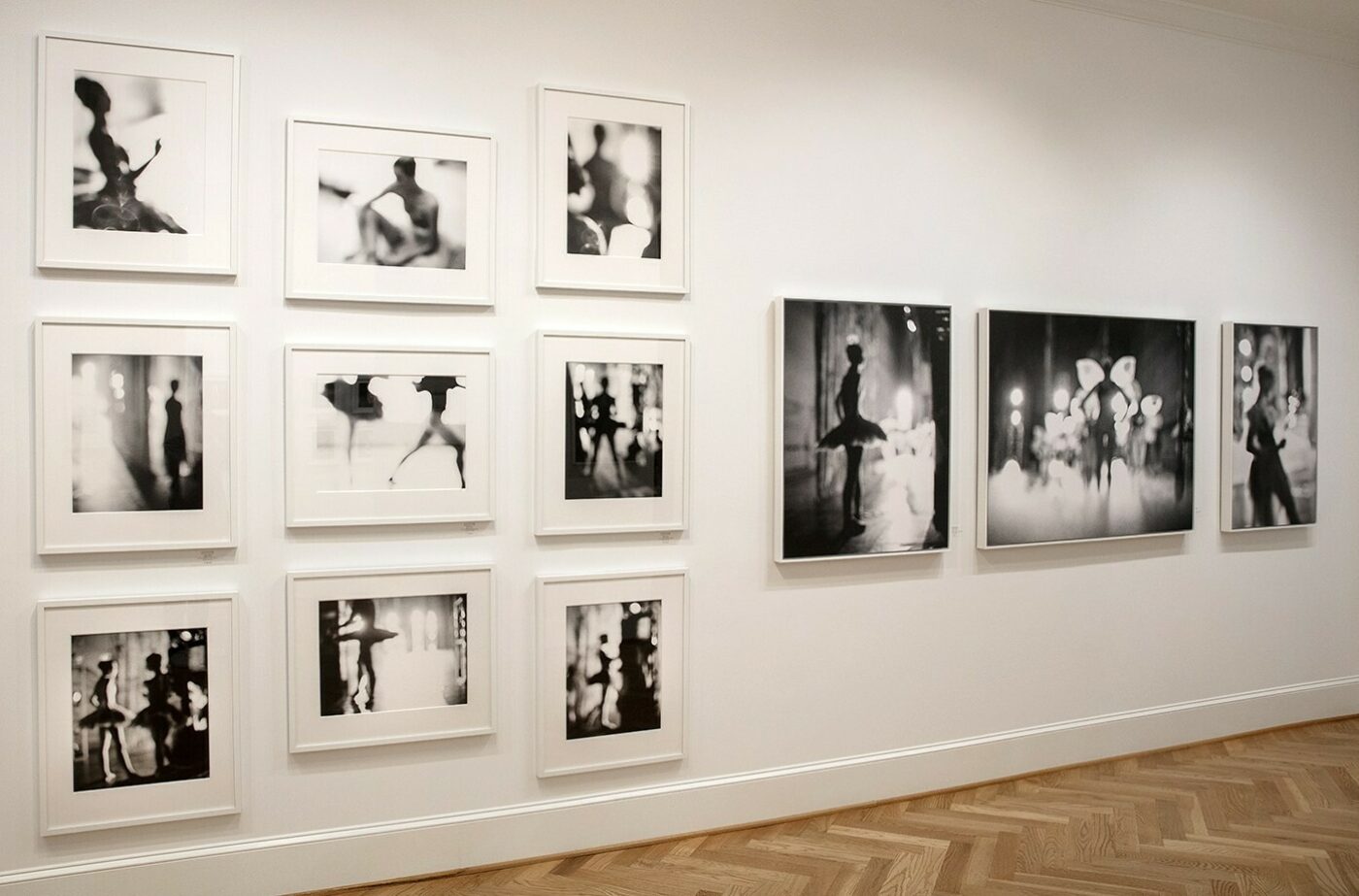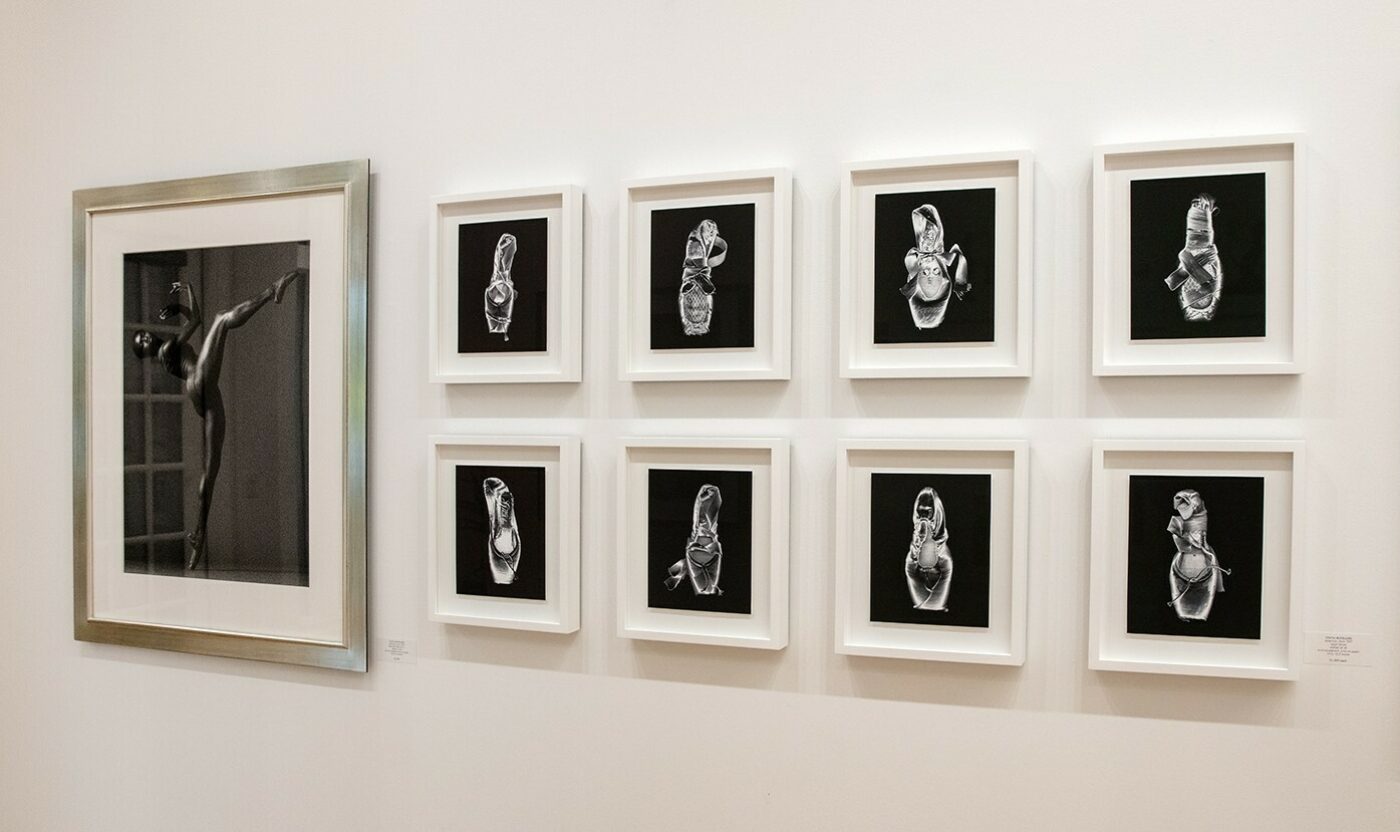Behind the Lens with Photographer Charlie McCullers
September 20, 2024

For over 20 years, Charlie McCullers served as the principal photographer for Atlanta Ballet. In addition to providing imagery for our commercial campaigns, he also had unrestricted access and creative freedom to capture images for his own fine art photography. These personal photographs can now be viewed in his exhibition Silk Asylum: Refuge Among the Sylphs at Spalding Nix Fine Art until November 8, 2024.
You were a photographer for Atlanta Ballet for 20 years, tell us about your relationship and collaboration with the Company.
In 1999 I was approached by an advertising client to work on a project for Atlanta Ballet. It was the 70th anniversary season and the ad agency was looking for a photographer who could handle advertising, marketing, and performance photography. I had just completed a two-year project with the High Museum of Art in which I had similar duties for the Sir Elton John: Chorus of Light exhibition, so the agency and Atlanta Ballet gave me a shot at working on their project. Almost immediately, I was in the theater with the then Artistic Director John McFall producing advertising photos for the upcoming campaign. John liked what he saw, and we worked together on many projects for the next 20 years.
What drew you to photograph ballet dancers?
I think ballet dancers are the most exquisite subjects to photograph. Not only do they have the discipline and drive to pursue their art; they also have a resilience and sense of community that is unrivaled. As an artist, I respond to the dancer’s vibrant sensitivity with absolute respect for the dedication to their art. For dancers, creativity is always tempered with community. Their desire to please themselves, their audience, and each other, is the primary concern. To witness this process, and have the access to engage with it, is incredibly fulfilling.

Your photographs capture the raw process of the artistic experience. Why did you think it important to show this, what do you find interesting about it, and how does the creative process differ from capturing performance photographs?
When you sit in the theater you witness the highly polished edge of a performance. When you view from the side-stage you witness the process, and when you sit in rehearsal you see the pain. All these components are necessary, and vital, for the end-product to convey its message, but rarely does anyone have the privilege to walk the path from start to finish. That’s what I want from these images, to convey to the viewer, certain aspects that go unnoticed, but are essential to the process.
As for capturing performance photographs - it’s always about timing. And it can be maddening if you lose your rhythm. Sometimes the lighting and music can help you get back on course, but there are so many components to measure. The dancer must follow the conductor to the next phrase, trusting their timing to be accurate, and sometimes they only have the silent metronome inside their head to pace their steps. Either way, performance photography is either successful or it isn’t, it’s a matter of synchronicity.
I have photographed in the theater alongside Kim Kenny for years and it’s always a moment of levity when our shutter-clicks are in unison, it’s the only validation we have that our timing is accurate - so we slyly acknowledge that we either both got the shot, or that we both missed it…
You have an interesting trend of photographing dancers out of focus, can you tell us about your motivation for capturing these images?
Sometimes I think that aspect of my work is not only therapeutic, but essential to maintaining my creative edge in communicating with an audience. The principle of focus is powerful, it tells the viewer where to look, and, by default, can influence what they think. The images that are de-focused are, to me, more democratic in their message. It’s up to the viewer to invite an idea or an emotion and apply it to the image, in their own time and in their own way. I like the stylized collaboration that naturally occurs between the dancer, the viewer and myself.

Your photographs intimately showcase pointe shoes, a dancer’s most personal tool. What inspires you to capture these moments?
There is nothing more fundamental to a dancer than their shoe. That relationship is arguably more important than anything else. The shoe, especially en pointe, is the most fluid and fickle of partners. The shoe won’t tolerate compromise and wields a strong voice in the conversation between the dancer and the floor. The shoe is demanding but supportive, it offers confidence and intrigue with every move, and with every landing. Most aspects of dance are collaborative, the relationship between a dancer and their shoe is a partnership. The consideration of the pointe shoe is always satisfying to me, whether it’s in the positive tone, or the negative; it personifies the sum of experience that connects the dancer with the immediacy of the moment.
Why are dancers your muse?
The best dancers never quit, even when they leave the stage. Somewhere early on they receive their gift and apply it to their persona for the rest of their lives. There is beauty in that decision and a celebration of that commitment, sacrifice is their currency, and they pursue their passion with total abandon. As an artist, as a human, I respect that dedication and resilience as a non-negotiable aspect of their persona.
How would you describe the process of your work progressing from Observation to Collaboration?
For me, Observation is a type of reverence, and Collaboration is an act of commitment. Both are independently viable, but together (with the act of participation) they form a more complete triad; much like the relative association of dancer, photographer and viewer. There is a freedom in observation that is unchallenged by evaluation; collaboration, on the other hand, is always accountable for its actions.
What have you discovered through your photographic journey with Atlanta Ballet?
Without question, my association with Atlanta Ballet has influenced me both personally and creatively. Discovery is for explorers and that’s at the heart of every dancer I’ve ever known. The challenges of creative movement are rewarding, and dangerous, and there are experiences to be gained at every crossroad. Preparation, belief and perseverance will offer an engaged experience and will follow you for the rest of your days. How could that ever be a bad thing?
How did the collaboration with Spalding Nix Fine Art come about?
Spalding Nix is celebrating 20 years in his gallery, and I am celebrating 20 years with Atlanta Ballet. It’s a great opportunity to do that together. I first met Spalding in 1998 when he was a gallery assistant - he literally hung my first solo show. We reconnected in 2019 and began talking about the synergy of collaboration and how it manifests. Spalding invited me and Cecilia Montalvo, my artistic collaborator of the past eight years, to produce and exhibit a body of environmental work and, with that, our friendship was rekindled. Spalding had known Cecilia for years and I knew Spalding since the last century! Another example of the triadic condition that makes art so vital.
After that first exhibition with Spalding, I met with Tricia Ekholm, Atlanta Ballet's Chief Marketing Officer, whom I met in the early 2000’s and we began to discuss the personal bodies of work that I had produced over the years. We decided we should share it with the public and here we are! Spalding and his wife Aimee, have two children who are currently enrolled with the Atlanta Ballet Centre for Dance Education, so there is a connected relevance in what we’re doing. All this kismet supports the underlying thesis that artistic communities can thrive through collaboration, and we are here to celebrate that.
What do you hope to achieve with the Silk Asylum: Refuge Among the Sylphs exhibition, and what do you wish visitors to take away?
I hope visitors will connect with the spirit of the imagery and consider an aspect of ballet that they were previously unaware of. Dancers are a unique, dedicated and extremely talented group of people who always offer their best artistic efforts. If we are lucky, we will benefit from the message of their movement and celebrate the poignancy of a life well-danced.
Silk Asylum: Refuge Among the Sylphs, Twenty Years of Atlanta Ballet captured by Charlie McCullers, can be viewed at Spalding Nix Fine Art until November 8, 2024.